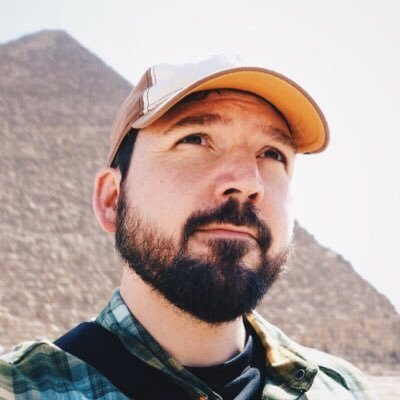Who's There?
I wrote this piece as the opening “lecture” for the Shakespeare MOOC I taught for UW-Madison with R L Widmann, Catherine DeRose, and Sarah Marty. I’m publishing it here along with a link to the series of videos I produced for the course. I wrote about the course’s pedagogy in an article for Hybrid Pedagogy, “The Course Hath No Bottom: the 20,000-Person Seminar.”
Shakespeare begins Hamlet with the words, “Who’s there?” The question is deceptively simple, but it is one that opens a whole host of potential rabbit holes for us to tumble down. What I know is that how we begin something new is important. The first thing we say. The first question we ask. The first part of ourselves we show.
The first words of a work of literature have a certain weight. In the 2002 film version of The Hours, Nicole Kidman as Virginia Woolf says after days of writing, “I believe I may have a first sentence.” The import of first sentences is clear in the assertiveness of her declaration and also in its uncertainty: Not “I have the first sentence,” but “I believe I may have the first sentence.” That sentence is: “Mrs. Dalloway said she would buy the flowers herself.” And some other first sentences:
"Ships at a distance have every man’s wish on board." ~ Zora Neale Hurston, Their Eyes Were Watching God
"It was a bright cold day in April, and the clocks were striking thirteen." ~ George Orwell, 1984
"Call me Ishmael." ~ Herman Melville, Moby Dick
"124 was spiteful." ~ Toni Morrison, Beloved
There are others. The first words of a work of literature are an author’s way of saying hello. This piece—these words right here—are my way of saying hello, my way of beginning. The first words of a work of literature give the reader instructions on how to read, a blueprint of sorts, a map to what matters, to what questions the work aims to ask. The first words are also the thing, the stuff of a work, that will be most read. Many readers won’t get past first words to second words, so those first words function almost like an arm, reaching out, hoping to lead the reader down a potential rabbit hole.
Shakespeare’s line, “Who’s there?,” does several things: quite literally, the speaker asks the listener on stage to identify herself; when performed, the line is also spoken to the off-stage or off-screen audience, calling attention to their simultaneous presence both within and outside the world of Shakespeare’s play; finally, it is a deeper question from Shakespeare about the nature of being. The question takes on a new and different set of potential meanings when it is read on the screen of a computer, iPad, Kindle, or smartphone, forcing contemporary readers of Shakespeare to question the nature of their own humanity in the face of rapid technological changes. Just as who we are as humans could be contained and expressed in the language of a theatrical play, now we must also consider who we become when our selves are reduced to the flurry of 1s and 0s that constitute us in our Facebook profiles, Tweets, and text messages. No matter which medium or device we use to encounter a play like Hamlet, no matter what self we bring to the encounter, Shakespeare continues to ask these questions of us, continues to ask who we are, what we see, and how we know.
The second line, “Stand, and unfold yourself,” is a command in response to the first question, “Who’s there?” It is a response with a handful of assumptions—that whoever’s there is capable of standing, that whoever’s there is folded, and that whoever’s there is self-reflexive, a self that recognizes itself as a self. Taken together, the two lines offer uncertainty, curiosity, and also distrust. They wonder at humanness but worry at its edge. The lines query and assert, calling out and recoiling across and beyond the space of the stage.
Delivered to a contemporary audience, the second line is a very particular kind of demand, asking from the outset of Hamlet for the audience not to remain seated, not to remain passive. In the Renaissance, the line, “Stand, and unfold yourself,” would have had a different flavor. The lower-class audience members would have already been standing in a pit, “groundlings” as Hamlet later refers to them in Act 3, scene 2; whereas the middle and upper classes would have sat along the sides of the theatre and in the balconies. So, the direction, when spoken to the audience is for everyone, all at once, to stand together.
That is what reading demands. That is what watching a play, or a film, demands. That is what a course demands, what learning demands—that we stand together. These are not solitary acts, not lectures from mere experts or mere literary geniuses, but collaborations, starts to conversation.

